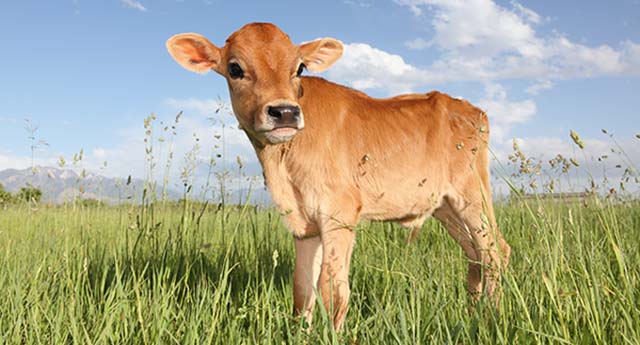
Perhaps the most common and consistent question I’ve received in my career is about whether dairy foods are good or bad. While I’ve addressed many aspects of this topic in past articles and books, there is both a short and long answer—the focus of this update.
The short answers about dairy are that it depends on the individual and whether they can tolerate these products, and on the ability to find healthy versions of these foods. While dairy can be a healthy part of a great diet for some people, for many others, it can wreck the body’s immune system, gut and even the brain.
The long answer is more complex. The most important factor is that there are two general types of dairy products: those that can be healthy for certain people, and others that should be avoided by everyone. This idea rules out most of the dairy products available to consumers, narrowing down the healthy possibilities. To further sort out the dairy dos and don’ts, below are specific issues to consider, which include low-quality dairy (junk food), individuality, lactose and fermented foods, and milk proteins.
Low Quality Dairy—Junk Food
Most dairy products come from the milk of unhealthy cow, goat or sheep sources. These animals are not cared for in a humane and healthy way, and are usually treated with antibiotics, hormones and exposed to other chemicals that can find their way into the milk and products made from it. Despite the use of antibiotics, much of this milk does not pass inspection as grade “A.” However, this milk is still sold to consumers, as grade “C” dried milk. It’s used in many packaged food products, including powdered milk. All these dairy products get my grade of “junk food” and should always be avoided. Go into any grocery store and whether it’s a container of milk, cheese or many packaged products containing dried milk, it’s an unhealthy choice. Many are also found in health food stores. This rules out the majority of all dairy products.
The healthiest dairy foods would include products made from certified organic animals that are grass fed, from animals well cared for. While these may be available in stores, they are more easily found in local farms or farmer’s markets, where the person who milked the cow or at least someone familiar with the farm is often there to ask about quality.
Individuality
I’m shocked that some people continually consume foods that don’t agree with them. It’s sometimes a minor symptom of indigestion or a slight brain fog following ingestion. While these feelings are often very minor, other people feel downright ill after eating dairy foods—headaches, nausea, skin rashes and others—clear indications that the food should strictly be avoided. Obviously, these individuals should avoid all dairy products.
Others don’t seem to have any signs or symptoms after consuming dairy. However, this does not always mean the food is good for you.
The easiest way to determine if dairy is causing any problems is to strictly avoid it for a period of 10 days to two weeks. Before you start, write down any problems you might have, whether you think they’re related to dairy or not, from minor physical aches or fatigue, to sleeping problems and skin- or hair-related signs. After your period without dairy, re-evaluate your list to see if anything has changed. If there’s a noticeable difference, most likely the dairy was a stress on your body. Otherwise, add the same amount of dairy you were previously eating and see if there’s a worsening of any signs or symptoms, or the creation of new problems. If this is the case, dairy may not be for you.
Sometimes, dairy can be part of a complex pattern of problems in the body and often cause secondary signs or symptoms. For example, people who are allergic or sensitive to wheat or refined carbohydrates often have dairy-related symptoms too. But let’s say wheat is a primary problem and dairy secondary, avoiding all wheat may eliminate the secondary sensitivity to dairy.
Another individuality issue has to do with overall health. Those who are healthiest can more often digest and absorb nutrients from dairy much better and without distress than those who are unhealthy.
Just what parts of dairy causes trouble for those sensitive or allergic? It depends on the person, but lactose (milk sugar) and casein (milk protein) are two common culprits.
Lactose and Fermented Foods
A major component of milk is the sugar lactose, which poses a potential problem for many consumers. While a good number of people have difficulty digesting lactose, others cannot digest it at all. In order to digest lactose, an enzyme called lactase is required, which digests the complex lactose into simple sugars. Without adequate digestion, lactose can ferment in the intestine, producing gas, bloating, cramps and diarrhea. Lactose-digestion problems are also associated with more serious disorders such as irritable bowel syndrome, and symptoms beyond the gut such as premenstrual syndrome, headaches, fatigue, mental depression and others.
Because of its relatively high lactose content, drinking milk, especially for adults and many children, is best avoided.
Many people who have problems with cow milk find that they can sometimes tolerate milk from sheep and goats much better because they may be lower in lactose. The fat in both goat and sheep milk is made up of smaller fat globules that also are easier to digest.
The problem of lactose can be remedied by using the process of fermentation, where healthy bacteria are added to milk to make cheese, yogurt and kefir. This can significantly reduce the amount of lactose in these products because the bacteria consume lactose for food.
For many people, these fermented dairy products can be healthy, especially when made from the milk of organic, grass fed animals. A variety of cheeses, yogurt and kefir are dairy products that come without many of the lactose-related problems associated with liquid milk. These cheeses can be found in many stores, local farms and markets, and on the Internet, and they’re easy to make at home.
Consumer beware:
- Avoid the fruit-flavored and sweetened varieties of yogurt and kefir that are usually full of sugar—sometimes with a half-dozen teaspoons or more. Buy the plain variety and if necessary, add fresh fruit or small amounts of honey.
- In addition, avoid so-called “American” cheese, cheese spreads and other processed cheeses. These highly refined products, which outsell natural cheese, are usually made from several types of unripe cheeses, ground up with added chemical stabilizers, preservatives and emulsifiers. Some are even organic, an example of the rapidly growing “organic junk food” segment of the so-called health food industry.
It’s important to remember that dairy is also high in saturated fat. But the makeup of this fat depends on the diet of the animal. This is another reason to only consume dairy from grass fed animals, which has a better quality of saturated fatty acids.
Unlike earlier studies, recent research indicates that dairy fat may not significantly contribute to chronic inflammation. However, it’s still important to consider the balance of dietary fats to assure one avoids the overproduction of inflammatory chemicals. (For the average person, avoiding vegetable oils and consuming adequate cold-water fish or fish oil capsules is more important than the amount of dairy fat consumed.)
The best cheese is produced with raw milk, like the traditional cheeses made for centuries (the same way it’s done in Europe today).
Milk Proteins
Remember Little Miss Muffet, eating her curds and whey? These are the two proteins found in milk. Whey protein is the thin liquid part of milk remaining after the curds—called casein—are removed.
Whey is the part of the milk containing most of the vitamins and minerals, including calcium, and it’s a complete protein. During the making of cheese, which mostly is produced from curds, whey is often fed back to the animals for nutritional reasons. However, making whey cheese, called ricotta, from fresh raw milk is great option. When buying it, check the label and make sure whey, not curds, is the main ingredient (many cheap ricotta products are made with whole milk and not whey).
Whey is also made into powders for use in baked goods, energy bars and smoothies. If you’re using powdered whey, buy organic.
The whey component of milk is also healthy because it contains a group of natural sulfur-containing substances called biothiols that help produce the main antioxidant in our cells called glutathione. Because it helps the immune system, whey has been used in the treatment of many chronic conditions, from asthma and allergies to cancer and heart disease. It can also help improve muscle function.
Most people who are allergic to cow’s milk can usually consume whey without problems. Small amounts of lactose are found in whey (much less than is found in liquid milk) but this is usually too little to cause intestinal problems, even in most people who are a bit sensitive to lactose. In those who are truly lactose-intolerant (probably less than five percent of the population), this amount of lactose could be a problem.
The curds from milk are used for most cheese making. Cottage cheese is the best example of what curds look like. However, it’s the curd that most people are allergic to when there’s a dairy allergy. Newborns and young children are especially vulnerable to curds because their intestine and immune system are too immature to tolerate this protein.
But not all casein is the same. Two of the most common types are called “A1” and “A2.” As a protein, A1 behaves like an opiate and has been associated with chronic illness and disease; but A2 has not. If you consume dairy products, it’s important to further narrow your choices to those made from milk with little or no A1.
Research shows a strong association between the consumption of A1 casein and various health problems. Numerous studies, including data from the World Health Organization (WHO), have linked A1 with increased risk of heart disease, high cholesterol, diabetes, sudden infant death syndrome, and neurological disorders, such as autism and schizophrenia. These health issues are not associated with consumption of A2 casein.
Most people think of black and white cows as the source of their milk. These animals, called Holsteins (the U.S. breed) and Friesians (the European version), are the most common sources of milk on the market. These large, high volume milk producers are most commonly used by big corporate dairy farms. They are typically given bST (bovine somatotropin—a hormone used to increases the cow’s milk production), and provided with special feeds of corn and synthetic vitamins rather than grass. These animals produce milk that contains higher amounts of beta-casein type A1. (Reddish colored cows, including Ayrshire and Milking Short Horns, are also in this category and less common.)
The other types of dairy cows are smaller, and brownish and white in color. These are called Jersey, Guernsey, and Brown Swiss cows. They produce lesser volumes of milk, are naturally resistant to disease, and convert grass to milk quite efficiently. These animals produce milk containing predominantly A2 casein—the healthy type. Their milk is similar to that of other animals including goat, sheep, buffalo, yaks, donkeys, and camels—milk from these animals contain mostly A2 and little A1.
How can you tell which type of animal your milk comes from? Unfortunately, in most cases, the milk from many different herds of cows are mixed by the time it gets to the store as milk or cheese. This makes it impossible to tell what you’re getting regarding the kinds of casein it contains. The best way to purchase this milk, or the products made from it, is at the farm, coop or farmer’s market, where you can often buy raw milk or cheese, and find out what types of cows are producing it.
If all this sounds complicated, it may be. Finding healthy dairy products is getting more difficult. By looking locally, even in large cities where country farmers are coming in for weekend markets, it’s getting easier to find these foods.
Like with many food items in today’s marketplace, the majority of dairy products should be avoided. I consume dairy regularly. This includes a variety of cheese, sour cream, and butter, all made with fresh raw milk from organic, well-fed and humanely treated animals.








